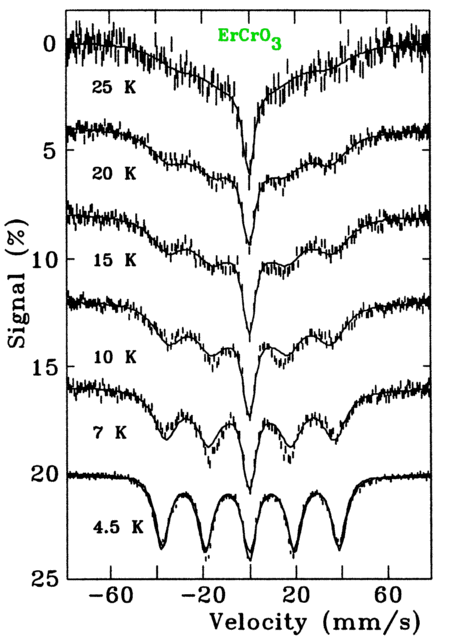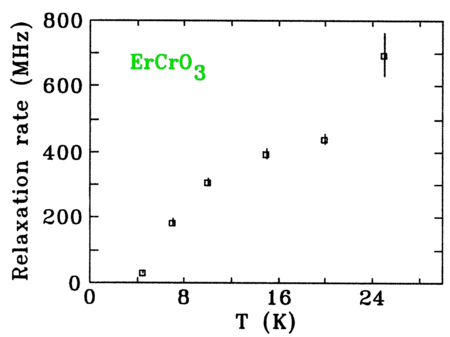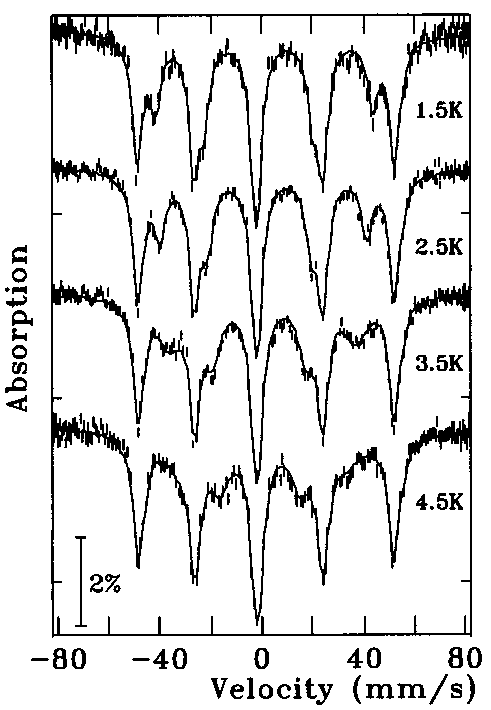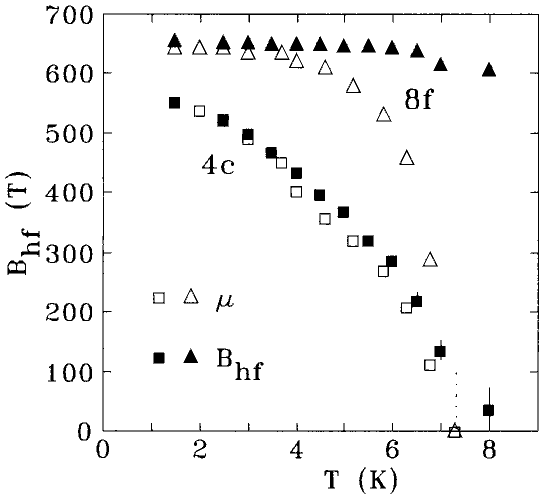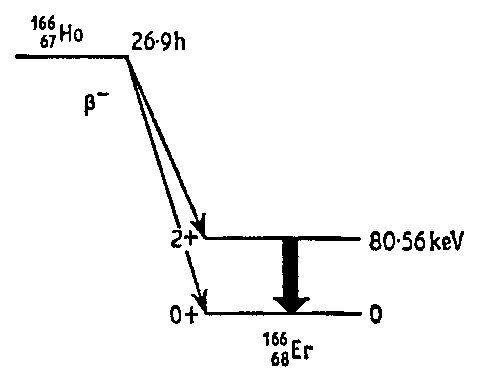 |
166Er Mössbauer uses the 80.56 keV level which is populated by the decay of 27 hour 166Ho. This isotope was prepared by neutron irradiation of 165Ho in the `SlowPoke' at Ecole Polytechnique, Montreal. |
Some test data
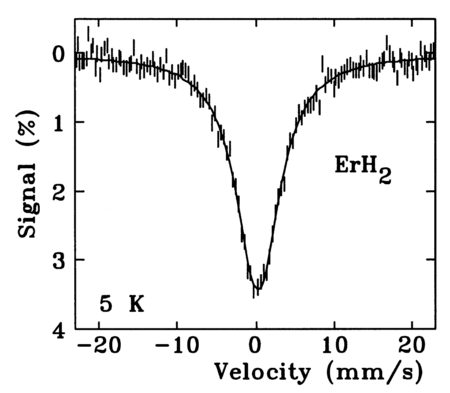 |
This was is our first spectrum. The sample was ErH2 The source was 27 mCi of 166Ho in Ho0.4Y0.6H2. The sample and source were both held at 5 K. The velocity scale was determined using simultaneous calibration with a 57Co source and iron metal sample. We obtained a linewidth (HWHM) of 3.30(1) mm/s. |
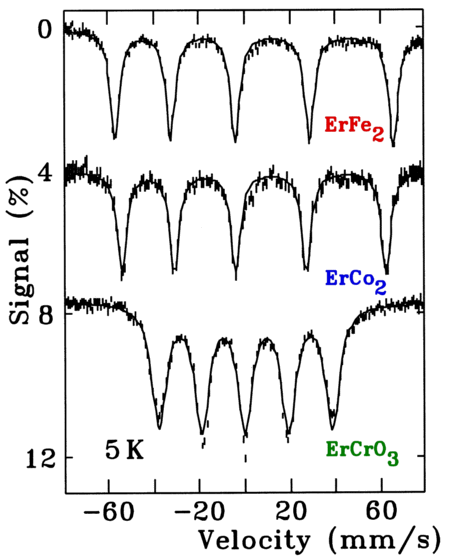 |
ErFe2 (top) and ErCo2 (centre),
provide examples of magnetically split 166Er
Mössbauer spectra. As both samples are fully ordered,
relaxation effects are absent and sharp lines
are observed (2.46(4) mm/s). The asymmetry is due to a significant electric field gradient in addition to the 800 Tesla hyperfine field. Both spectra were fitted with lineshapes calculated using the full Hamiltonian for this Mössbauer transition. The bottom spectrum (ErCrO3) shows a smaller Er moment (the hyperfine field is only 500 Tesla), while the much broader lines (3.79(5) mm/s) combined with the form of the mis-fit, clearly indicate the presence of relaxation.
|
